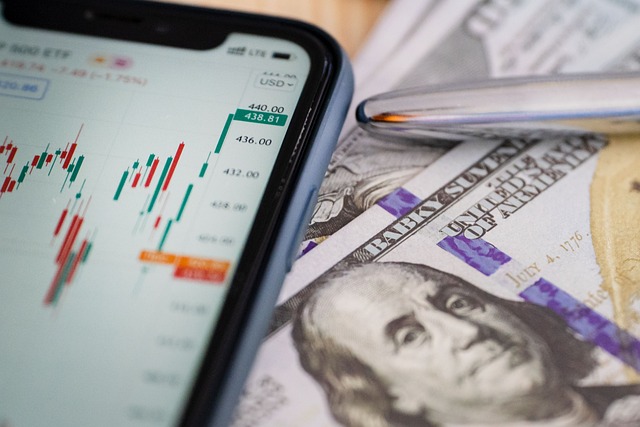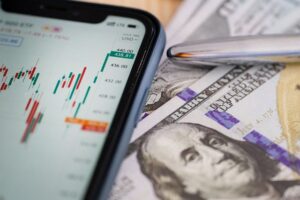Passive vs. Active Investing: Finding Your Perfect Fit
Investing is often viewed as one of the most effective ways to build wealth over time. However, the method you choose to invest can significantly influence your financial future. Among the various strategies available to investors, two of the most common approaches are active and passive investing. Each method has its unique characteristics, advantages, and disadvantages, making it essential to understand both in order to find your perfect fit.
Understanding Active Investing
Active investing is a strategy where investors or fund managers actively select securities in an effort to outperform market indexes or benchmarks. This approach generally involves extensive research, analysis, and a hands-on approach to portfolio management.
Characteristics of Active Investing
Active investing typically involves:
- Research and Analysis: Active investors conduct detailed analysis on individual securities, sectors, or economic trends, often using fundamental and technical analysis.
- Frequent Trading: Active strategy often involves buying and selling securities more frequently to capitalize on market inefficiencies or price fluctuations.
- Goal of Outperformance: The primary objective is to outperform a benchmark index, such as the S&P 500.
Advantages of Active Investing
Some of the advantages of active investing include:
- Potential for Higher Returns: If executed successfully, active investing can yield returns that exceed those of passive investments. Skilled managers may identify undervalued stocks or sectors ahead of the market.
- Flexibility: Active investors can adapt their strategies based on market conditions, allowing them to pivot quickly in response to economic changes or emerging opportunities.
- Downside Protection: Active managers can employ strategies to hedge against losses during market downturns, seeking to minimize risk.
Disadvantages of Active Investing
Despite its potential upsides, active investing has several drawbacks:
- Higher Fees: Active funds often charge higher management fees due to the extensive research and management involved.
- Risk of Underperformance: Many active funds may fail to outperform their benchmarks, particularly after fees are taken into account.
- Time-Consuming: Active investing requires significant time and effort, making it suitable primarily for those who can dedicate the resources necessary.
Diving into Passive Investing
On the other hand, passive investing aims to replicate the performance of a benchmark index by investing in a diversified portfolio of assets that mirrors that index. Essentially, passive investors buy and hold assets without attempting to outperform the market.
Characteristics of Passive Investing
Passive investing generally features:
- Index Funds and ETFs: Investors typically use index funds or exchange-traded funds (ETFs) that track specific indexes.
- Long-Term Focus: The strategy emphasizes a long-term investment horizon, minimizing short-term trading.
- Minimal Trading Activity: Passive investors do not frequently buy or sell, resulting in lower transaction costs.
Advantages of Passive Investing
Passive investing offers various benefits, including:
- Lower Fees: With minimal management and trading, passive funds tend to have lower management fees compared to active funds.
- Consistent Performance: Historically, many passive investment strategies have outperformed active strategies over the long term due to lower costs and fewer timing errors.
- Simplicity: Passive investing is straightforward, appealing to those who prefer a less hands-on approach.
Disadvantages of Passive Investing
While passive investing offers many advantages, it also has its limitations:
- Lack of Flexibility: In declining markets, passive investors may find it challenging to adapt since their strategy is designed to track indexes.
- Market Risk: By mirroring index performance, passive investors are exposed to market-wide declines, lacking the downside protection offered by active management.
- No Opportunity to Outperform: Passive investors relinquish the potential for superior returns, as their goal is not to outperform the market but rather to replicate it.
Choosing Between Active and Passive Investing
Deciding between active and passive investing is not a one-size-fits-all scenario; instead, it should be influenced by your individual financial goals, risk tolerance, time commitment, and personal preferences. Here are some factors to consider:
Your Financial Goals
If your goal is to achieve minimal returns and focus on long-term wealth accumulation, passive investing may be an appealing option. Conversely, if you seek to achieve higher returns and are willing to take on additional risk for the chance to outperform the market, active investing might be more suitable.
Risk Tolerance
Understanding your risk tolerance is a crucial part of the investment decision. With passive investing, you may experience fluctuations in the value of your investment portfolio that align with market performance. Active investing may expose you to more significant volatility, but it also offers the potential for higher returns and protective strategies.
Time Commitment
Active investing typically demands more time and effort for research, analysis, and monitoring of investments. If you do not have the time or the aptitude for extensive market research, passive investing could be more appropriate. Alternatively, if you enjoy in-depth financial analysis and monitoring, active investing may align with your interests.
Personal Interest and Knowledge
Your familiarity with markets, economic conditions, and investment vehicles may also guide your choice. Those with substantial market knowledge may feel more comfortable pursuing an active approach, while those who prefer simplicity and a hands-off method may gravitate toward passive investing.
Blending Strategies for a Balanced Approach
While understanding the differences between active and passive investing is crucial, blending both strategies can also be an effective approach. Many investors create a diversified portfolio that includes both active and passive components to balance potential returns with costs and risks.
Benefits of a Balanced Portfolio
A blended strategy allows investors to:
- Mitigate Risk: Including both active and passive investments can provide downside protection while capturing upside potential.
- Enhance Diversification: A portfolio that integrates different strategies can benefit from the strengths of each, providing a more robust investment framework.
- Leverage Market Opportunities: Active strategies can help to capitalize on market inefficiencies, while passive strategies provide a solid foundation for consistent growth.
The Future of Investing: Trends to Consider
The investment landscape is continuously evolving, influenced by technological advancements, economic changes, and emerging markets. A few trends worth observing include:
- Growth of Passive Investing: In recent years, passive investing has gained traction, attracting significant inflows as investors seek lower fees and consistent returns.
- Rise of AI and Technology: The use of artificial intelligence (AI) and data analytics is transforming both active and passive strategies, providing real-time insights and improving decision-making.
- Focus on Sustainable Investing: More investors are considering Environmental, Social, and Governance (ESG) factors, leading to a new wave of investment strategies aimed at aligning financial goals with social responsibility.
Conclusion
Choosing between active and passive investing entails careful consideration of your financial goals, risk tolerance, commitment to research, and personal interests. While both strategies have their advantages and drawbacks, understanding these differences helps you make informed decisions tailored to your investment profile.
Ultimately, whether you lean toward active, passive, or a blended approach, always remember that prudent investing is a long-term endeavor. Develop a strategy that reflects your unique aspirations and investment philosophy to pave the way for a successful financial future.





